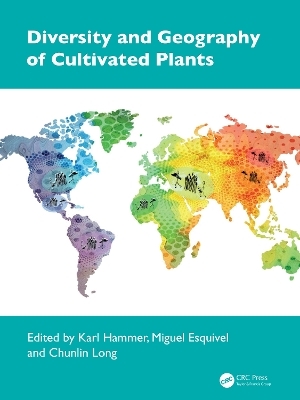
Diversity and Geography of Cultivated Plants
CRC Press (Verlag)
978-0-367-22776-0 (ISBN)
- Noch nicht erschienen (ca. April 2025)
- Versandkostenfrei
- Auch auf Rechnung
- Artikel merken
This book presents information on cultivated plants located within 12 different regions throughout the world. The content introduces cultural evolution and species richness in cultivated plants, considering domestication assessments, which make it possible to obtain a deeper insight into the diversity of these plants.
Cultivated plants are evolutionary connected to man, human action for nature and culture is necessary to secure the basis for future existence of humanity. Cultivated plants are included in this compilation, plants are grown for food, food additives, fodder, medicine, fiber, seasoning or as green manure crops, shade trees or hedge shrubs. The large number of commodity groups characterize the number of interactions between man and plants.
The aim of this book is to bring together an actualized list of cultivated plants. It was necessary to organize, store and analyze gathered data during the exploration and collection missions, as well as those resulting from the ethnobotanical, archaeological and genomics studies. The book presents essayistic introductions; short data on areas of distribution and cultivation areas; the use of the plant; the history and descent of the plant; and citations of common names as a part of the cultural evolution of mankind. Where necessary, the content explores "gene sources” as plants for different breeding purposes including resistance, quality, yield improvement and weeds.
Karl Hammer, Prof. Dr., was born in Leipzig, Germany, in 1944. He was head of the Gatersleben genebank (Germany). Later on, he took over the chair of Agrobiodiversity (retired) and was Director of the Tropical Greenhouse in Witzenhausen. His fields of expertise include taxonomy of cultivated plants and plant genetic resources research. Dr. Hammer authored or co-authored approximately 600 journal papers and 50 books. He was actively engaged in more than 70 missions for investigating and collecting cultivated plants and their wild relatives in Europe, Asia, Africa and America. For several years he was head of the section of plant genetic resources (EUCARPIA). In 1986 he joined the editorial board of Euphytica (International Journal of Plant Breeding). He served on the editorial boards of several other journals. Since 1992 he is a member the Managing Editorial Board of Genetic Resources and Crop Evolution (Am International Journal) and its EiC since 2000. Miguel Esquivel is a senior researcher at the National Centre for Laboratory Animal Breeding, CENPALAB, Cuba. Long Chunlin is a professor at Minzu University of China, China.
1. Introduction 2. Material and methods 3. Results and discussion 4. Prospects of genomics - providing new insights into the evolutionary history of crop plants 5. East Asiatic region of diversity 6. Indochinese-Indonesian region of diversity 7. Australian Oceania region of diversity 8. Hindustani region of diversity 9. Central Asiatic region of diversity 10. Near Eastern region of diversity 11. Mediterranean region of diversity 12. African region of diversity 13. European Siberian region of diversity 14. South American region of diversity 15. Central American and Caribbean region of diversity 16. North American region of diversity 17. References
| Erscheint lt. Verlag | 9.4.2025 |
|---|---|
| Zusatzinfo | 32 Tables, black and white; 12 Line drawings, color; 120 Halftones, color; 1 Halftones, black and white; 132 Illustrations, color; 1 Illustrations, black and white |
| Verlagsort | London |
| Sprache | englisch |
| Maße | 210 x 280 mm |
| Themenwelt | Naturwissenschaften ► Biologie ► Botanik |
| Weitere Fachgebiete ► Land- / Forstwirtschaft / Fischerei | |
| ISBN-10 | 0-367-22776-2 / 0367227762 |
| ISBN-13 | 978-0-367-22776-0 / 9780367227760 |
| Zustand | Neuware |
| Informationen gemäß Produktsicherheitsverordnung (GPSR) | |
| Haben Sie eine Frage zum Produkt? |
aus dem Bereich


